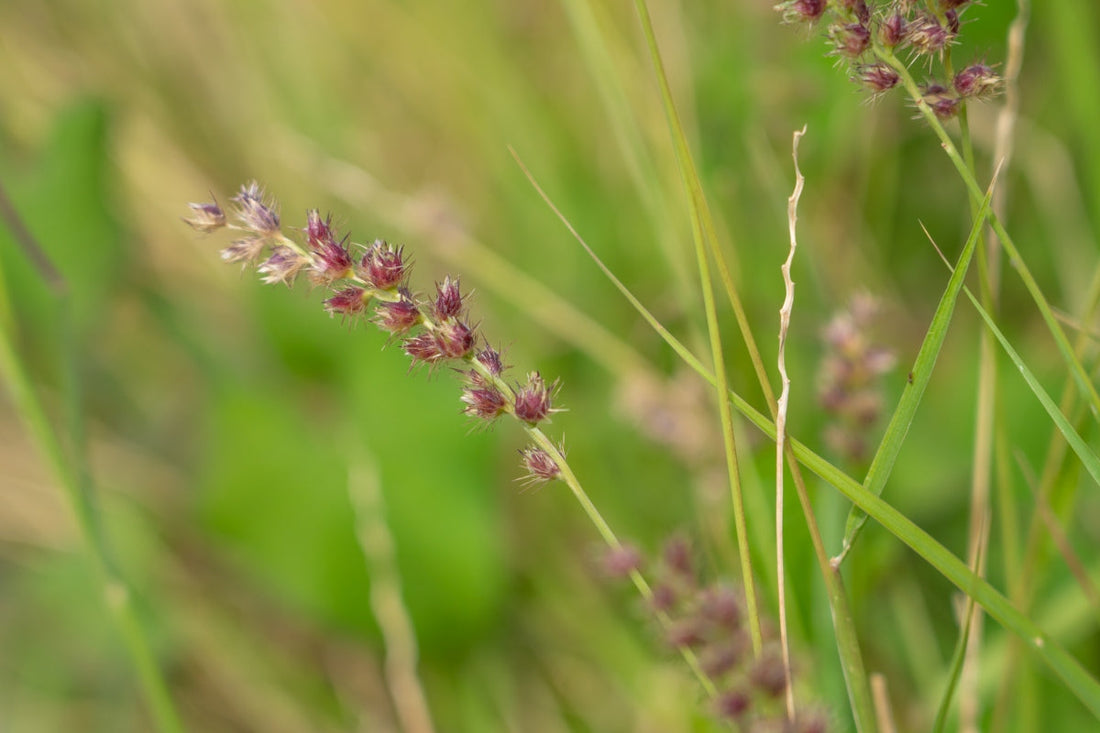There's really nothing more frustrating than relishing a simple barefoot stroll across your lawn, only to suddenly prick your foot on a sneaky, spiny sandbur.
These invasive weeds aren't just a minor nuisance; they're tough, relentless invaders that can quickly overrun your yard if you don't stay vigilant. If you've been battling to keep them under control, you've come to the right place.
In this guide, we'll cover how to stop them before they sprout using the best pre-emergent for sandburs and professional-grade advice designed specifically for DIY homeowners who take lawn care seriously.
What this article covers:
- What Are Sandburs and Why Are They Hard to Control?
- Top Pre-Emergent Products for Sandbur Control
- Best Time to Apply Pre-Emergent for Sandburs
What Are Sandburs and Why Are They Hard to Control?
Sandburs (Cenchrus spp.) are pesky, warm-season annual grasses that tend to thrive in tough, sandy soils, right in the Southeast and Southern Plains.
They usually start germinating in early spring and grow up pretty fast, reaching maturity by mid-summer. You can spot them by their nasty, spiky seed heads that tend to cling to shoes, pets, and lawn equipment.
Once they take hold, they're tough to get rid of and often come back year after year.
The real issue stems from their clever growth tactics. Sandburs are fierce competitors with your turfgrass—they love to invade any sparse or bare spots in your lawn, especially where the soil is compacted, dry, or not so healthy.

They spread with ease and can produce hundreds of seeds in just one growing season.
Each of those spiny burs has the potential to cause multiple new infestations, making them tough to control. That's why stopping them early is so important.
Another challenge is their ability to adapt. Sandburs actually do better under stress—when water is scarce, nutrients are lacking, or temperatures soar.
These conditions give them an unfair advantage, which explains why many homeowners struggle to control them, even with regular lawn care. Mowing and watering alone just won't cut it; you need a proactive approach to keep them at bay.
Can Pre-Emergents Really Prevent Sandburs?
Absolutely, but only if you use it the right way. Pre-emergent herbicide doesn't go after the visible weeds. Instead, the herbicide targets the seed before it even has a chance to sprout.
They work by creating a chemical barrier in the top layer of soil that messes with cell division in germinating seeds. For sandburs, which usually germinate when soil temps hit around 55–60°F, this barrier needs to be in place beforehand to really do its job.
If you apply your pre-emergent too late, you've already missed the boat. The seeds germinate quickly and start growing underground before you even notice them.
Plus, pre-emergents need moisture to activate, so watering them in or applying just before rain is super important.
And keep in mind, pre-emergents don't kill existing sandburs. If you're already seeing burs, you'll need a different treatment to handle those.
That's why timing is everything and why using the best pre-emergent for sandburs as part of your seasonal lawn care plan makes all the difference.

Top Pre-Emergent Products for Sandbur Control
With years in the industry and dozens of experts on call, we can confidently say these are the best pre-emergent products for those pesky sandburs.
Guardian 13-0-10 Pre-Emergent
Guardian 13-0-10 is a top-tier, professional-grade solution tailored for DIY homeowners who demand results. It contains Prodiamine, one of the most effective pre-emergent herbicides for sandbur control.
What sets Guardian apart is its dual purpose—it not only blocks weeds, but also feeds your lawn with a balanced boost of potassium and other micronutrients. This combination strengthens your turf to outcompete future weed threats.
Because it's blended from field-tested formulas used on estate properties, Guardian is ideal for homeowners looking to upgrade their routine and get serious about prevention.
Plus, it comes with expert guidance on timing and application, so you can use it with confidence.
Snapshot 2.5 TG (for Non-Turf Areas)
For those hard-to-mow or decorative zones, such as flower beds, fence lines, and pathways, Snapshot 2.5 TG is a non-selective pre-emergent that controls over 100 weed species, including sandbur.
It's not for lawns, but it's a go-to for mulch beds and ornamental spaces. Use it to draw a hard line where you don't want any unwanted growth.
Best Time to Apply Pre-Emergent for Sandburs
You know what to use. Now let's go over when to use it for maximum impact.
When to Apply
Apply your pre-emergent in late winter or early spring, ideally just before the soil temperature reaches approximately 55°F.
For most of Florida, that typically means doing this between February and early March. In North Carolina and other parts of the Southeast, it's usually late March to early April.
To get it just right, a soil thermometer can be really helpful, but you can also check regional soil temperature data from local extension services to guide your timing.
This timing aligns with guidance on when to apply pre-emergent for bermuda grass, which shares similar seasonal behavior to sandburs.
In fact, treating both issues simultaneously is an efficient strategy if Bermuda is your dominant turf.

Why Timing Matters
Miss the window, and you'll be stuck fighting sandburs after they're already embedded.
Apply too early, and the chemical barrier could break down before peak germination. Apply too late, and it won't stop a thing.
Pre-emergents don't move downward much in the soil, so that top inch is where the battle is won or lost.
That's why a well-timed application, combined with proper watering and follow-up, is the cornerstone of success.
When to Add a Second Application and Why It Helps
Sandbur season isn't over after just one treatment. If you have sandy soils or experience a lot of rain, the initial barrier you create with your weed control can weaken by late spring.
That's why it's a good idea to apply a second round, about 8 to 10 weeks later, especially if you choose a different active ingredient like Pendimethalin. This helps ensure continuous protection.
It's also a great opportunity to reassess your weed situation.
Using this layered, attentive approach is how pros keep their properties looking perfect.
Conclusion
Getting rid of sandburs doesn't happen overnight, but it does start with the right plan.
By selecting the best pre-emergent for sandburs, applying it at the proper time, and following up with a second round when needed, you're setting up your lawn for a season of success.
Lawn Synergy partners with you every step of the way—because weed-free, barefoot-ready turf isn't just for professionals anymore.
Let us guide you with professional-grade products, custom-blended for real results. Get in touch today!
Ready to learn more? Check out these articles:
- Best Pre-Emergent For Dandelions
- What Pre-Emergent Should I Use
- What Pre-Emergent To Use In Spring
- Soil Temp for Pre-Emergent
- Pre-Emergent Before Rain
- When to Apply Dimension Pre-Emergent
- Is Pre-Emergent Safe for Dogs?
- Is Pre-Emergent Toxic?
- Does Pre-Emergent Kill Clover?
- Should You Mow Before Pre-Emergent?
- Are Pre-Emergent Herbicides Safe?
- Best Fall Pre-Emergent
- Best Pre-Emergent for Spring
- When to Apply Pre-Emergent for Poa Annua
- Best Time for Pre-Emergent in North Texas

